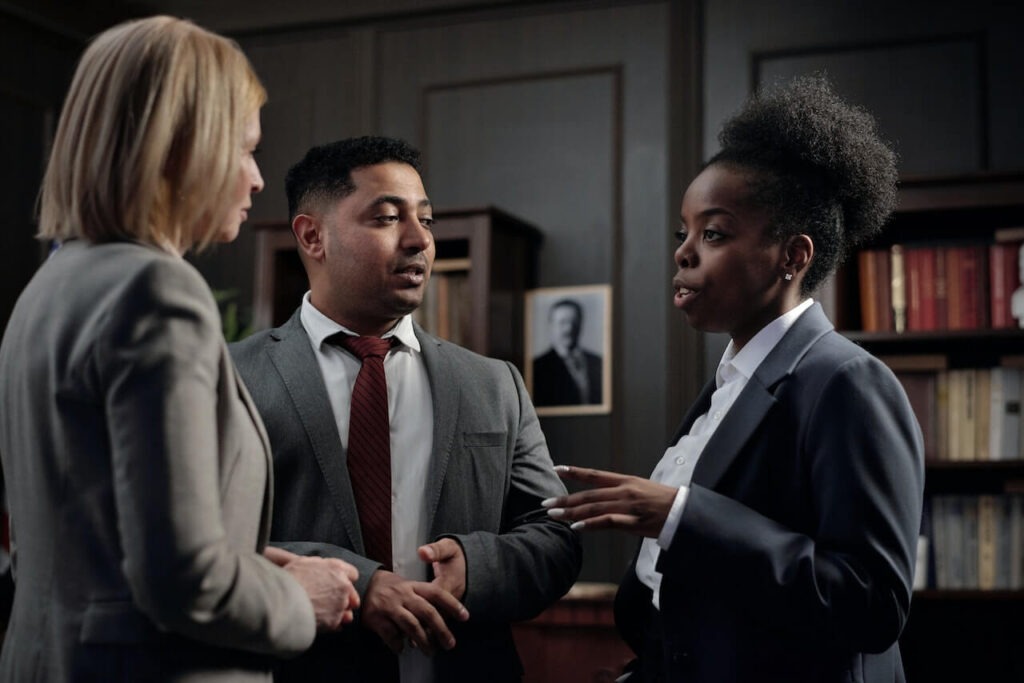“People in almost every society value honesty and maintain high beliefs about their own morality; yet examples of significant dishonesty can be found everywhere in the marketplace” — Dan Ariely.
The average organization losses about 1% to 5% of annual sales in fraud and corruption, and at least 49% of global organizations have been victims of fraud… Just imagine losing 5% of your income every year because of fraudsters. It would be a hole in your pocket — and for small companies or multinational corporations is the same!
Fraud and corruption endanger your job, your family security, and your reputation as part of an organization – and it may affect your career. Isn’t it unfair? It definitely is! But, we have strategies to face fraudulent practices and save your organization from a disaster.
Allowing Whistle-blowing in Your Organization

Photo by Alex Green
As organizations grow, it becomes more and more important to have systems in place to prevent corruption. One way to do this is to encourage whistle-blowing.
Whistle-blowers are employees who report illegal or unethical behavior within an organization. They can be a valuable asset in combating corruption as they can help to expose wrongdoing that might otherwise go undetected.
However, it is important to create a safe and supportive environment for whistle-blowers since they may be at risk of retaliation from those who are engaged in corrupt practices. One way to do this is to provide them with anonymity and protection from reprisals.
Whistle-blowers are usually treated like traitors. But, they risk their jobs and even their lives to confront the power structure when fraud happens. So, whistler blowers should be expected and regulated with precise procedures to separate gossiping from potential fraud and facilitate the detection of any wrongdoing.
As an illustration, when Sherron Watkins warned about Enron’s irregularities, she was ignored. But, if she were listened to, maybe Enron would be still working… Or when Matthew Lee alerted Lehman Brothers about their own accounting practices, maybe Lehman Brothers might have stopped and corrected their accounting routines.
In effect, whistle-blowers are essential to prevent, detect and stop fraud because they know what happens inside the organization. Audits are mandatory… But they don’t prevent fraud, they reveal them! Actually, auditors only detect 20% of frauds while whistle-blowers expose about 43% of frauds.
Paying Attention to Warning Signals

Photo by Yan Krukau
“Organisations face innumerable integrity risks, at every level and division, affecting every asset, person and objective” — Nigel Iyer.
If you see something that doesn’t seem quite right, you should speak up and ask questions. By doing so, you can help to expose corrupt practices and bring them to an end.
There are several warning signals that suggest something may be wrong. These warning signals are as evident as extraordinary expenses, hiring overpaid consultants, or taking financial decisions consulting no one. Consequently, have a list of warning signals specifically designed for your organization to strengthen internal controls.
A real-life example is when Harry Markopolos stopped Bernie Madoff and his Ponzi scheme by noticing that it was impossible to achieve the return on investment he was offering. It was clear to Markopolos that it was a fraud alert and he stopped the $60 billion Madoff´s business.
Avoiding Employees Who Are Tolerant of Fraud

Photo by August de Richelieu
“Fraud is always obvious to the fraudster’s colleagues after the event […] However, the mistake is always the same — fraud was never considered a possibility” — Chartered Institute of Management Accountants.
The idea of zero tolerance to fraud is difficult to apply because it requires defining what is corruption and what is not — and it depends on the national and organizational culture. Then, it’s hard to create a one size fits all fraud and corrupt standard.
While it’s impossible to know for sure whether someone will engage in dishonest behavior, there are some warning signs to watch out for. If you’re concerned about someone on your team, it’s important to have a conversation and see if there are any red flags.
It’s essential to identify people who would be tempted to commit fraud. Likewise, it’s a bad idea to have someone in a position of power who is too ambitious, lacks empathy, and possesses a narcissistic personality. The combination of these traits may reveal a future corrupt leader who would allow the cultural acceptance of fraud – and when fraud and corruption are culturally accepted, it’s harder to change the situation.
Thus, managerial roles must be held by people with the highest reputation and ethics – and even then, they must be under internal controls because executives and owners are the ones who have more opportunities to commit fraud.
Beware of Group-Thinking

Photo by Pavel Danilyuk.
“Conformity might help explain why so few people resist their organizations and why a group may tolerate or engage in unethical and socially irresponsible behaviours” — Stewart Clegg, Martin Kornberger and Tyrone Pitsis.
Group thinking is when people avoid creating conflicts to be accepted in the organization. It seems natural as everybody wants to be accepted… But, it creates negative inertia if there is something wrong!
As an example, in 2007, optimism regarding the economy prevailed and the International Monetary Fund and Federal Reserve promoted the self-correcting power of the market. However, many analysts warned that there were dangers for the global economy – and their warnings weren’t listened to, so they had to give up their ideas to avoid ruining their careers.
So, allow fresh ideas to keep your organization clean of fraud because if all of us think the same way, there will be no dissension to correct wrongdoings.
Think Like a Fraudster

Photo by Annie Spratt.
“To catch fraudsters, think like they do” — Roy Strom.
By understanding how fraudsters operate, businesses can be better equipped to identify and prevent corrupt practices.
The best way to get answers about how the mind of a fraudster works is to think like one, and a brainstorming process to find the weaknesses of your organization is a good way to start. Therefore, organizations should create policies and procedures that make it difficult for employees to engage in corrupt activities.
According to Cressey and his Fraud Triangle, it’s possible to understand why fraud occurs. Basically, it comprises 3 elements.
By using these 3 elements, it’s easier to block the road for fraudsters. For example, regarding the pressure element, in the business world, we are taught to compete and make as much money as possible, but it increases the likelihood of involving the organization in fraud and corruption because of greed… And greed must have limits!
Featured Image: Photo by Andrea Piacquadio

